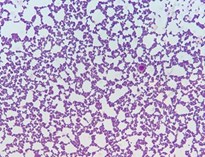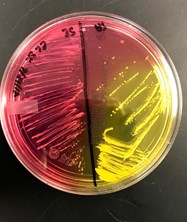When I was a junior in high school and looking to apply to WVU, I really wasn’t sure yet what I wanted to major in. I knew I loved science, but I felt that Biology or Chemistry wouldn’t be a good fit for me. I found WVU School of Medicine’s Pre-Professional Program and found something that caught my eye: Immunology and Medical Microbiology. I honestly wasn’t sure what that major would entail, but it sounded interesting. After doing a little more research into what WVU’s IMMB program was all about, I knew this was the major for me, for several reasons:
- Small Class Sizes: The IMMB major is one of the smallest at WVU. If being at a big school like WVU is intimidating to you, joining a small major is a good way to make school less scary. You’ll make a lot of friends very
 quickly because you’ll have a lot of classes with the same people.
quickly because you’ll have a lot of classes with the same people. - Diverse Class Options: In the IMMB major, you’ll take a lot of the same classes as other science majors (Cellular and Molecular Biology, Organic Chemistry, and Physics), but you also get to take a lot of more major specific classes and electives, such as Medical Microbiology, Vaccinology, Parasitology, and many more.
- Room for Extracurriculars and Other Coursework: The major is not easy by any means and you will have homework. However, it is definitely manageable, and most students have enough room in their schedule to
 take other classes that interest then or even pick up a minor. On top of that, most students join clubs or do other activities as well.
take other classes that interest then or even pick up a minor. On top of that, most students join clubs or do other activities as well. - Knowledgeable and Helpful Professors: Since the major is so small, all of your professors will get to know you on a first-hand basis. This is extremely helpful, as it makes it easy to ask for help when you need it and to get to know your professors.
- Research Opportunities: The IMMB department offers plenty of opportunities for undergraduate research. The biggest one is a 2-and-a-half-year long research internship that allows students to work in a lab starting the summer after their sophomore year until they graduate.
